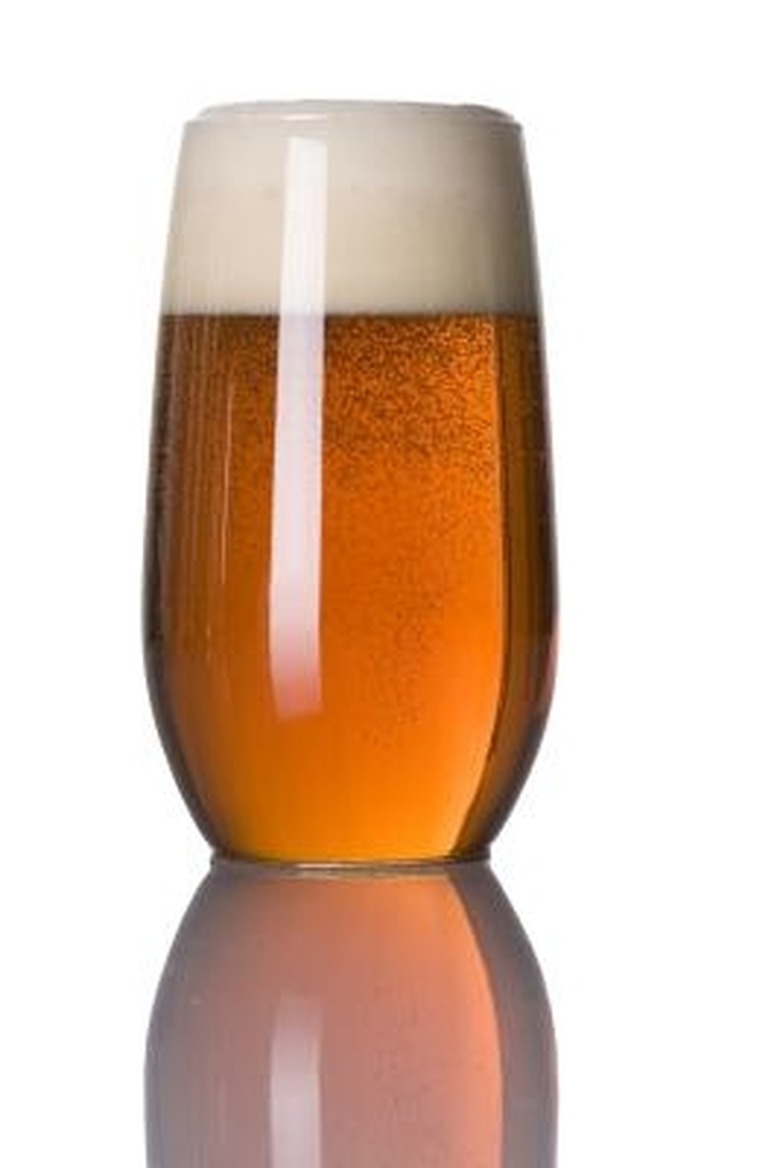Uses Of A Hydrometer
A hydrometer is an instrument that measures the specific gravity of liquids. The specific gravity of a liquid is the density of that liquid divided by the density of water (in the same units). A hydrometer accomplishes this by measuring the amount of water it displaces. Hydrometers are commonly used by winemakers to determine the sugar content of wine, and they're also used in soil analysis.
Operation
Operation
A hydrometer is typically a long, glass cylinder that's weighted at the bottom to give it stability in water. It also contains a scale for the specific gravity printed along its side. The hydrometer is placed in a clear container of liquid, and the value at the surface of the liquid provides the specific gravity for the liquid. For greater accuracy, this reading must be corrected according to the temperature because the density of a liquid changes with temperature.
Uses in Brewing and Winemaking
Uses in Brewing and Winemaking
Use a special type of hydrometer known as a saccharometer and a thermometer to check the sugar content of wine or beer. The amount of solute in a solution may be determined by its specific gravity because the solute increases the density of the solution. The precise sugar content of grape juice is of critical interest because this directly determines the amount of alcohol that it might eventually contain. The alcohol content of the finished product may also be determined by a specific type of hydrometer called an alcoholometer or proof and traille hydrometer. These types of hydrometers are typically calibrated to room temperature (20 degrees C), and in these cases, the temperature correction factor will usually be small.
Additional Uses
Additional Uses
Soils may also be graded with a hydrometer. The diameter of soil grains is frequently of interest when studying soils, and some grains may be too small to measure with sieves. This type of hydrometer measures the density of these grains and their terminal velocity as they fall through the solution. These values allow the diameter of the soil grains to be calculated, thus providing the percentage of particles in the sample that exceed a given size.
A lactometer is a type of hydrometer that tests milk. Milk contains a variety of substances that are both lighter and heavier than water so the specific gravity is not meaningful by itself. The specific gravity must, therefore, be combined with other tests in order to provide specific information about its composition. Milk producers are typically most interested in knowing the fat content of their milk.
References
Cite This Article
MLA
Robinson, Allan. "Uses Of A Hydrometer" sciencing.com, https://www.sciencing.com/uses-hydrometer-5273333/. 24 April 2017.
APA
Robinson, Allan. (2017, April 24). Uses Of A Hydrometer. sciencing.com. Retrieved from https://www.sciencing.com/uses-hydrometer-5273333/
Chicago
Robinson, Allan. Uses Of A Hydrometer last modified March 24, 2022. https://www.sciencing.com/uses-hydrometer-5273333/
